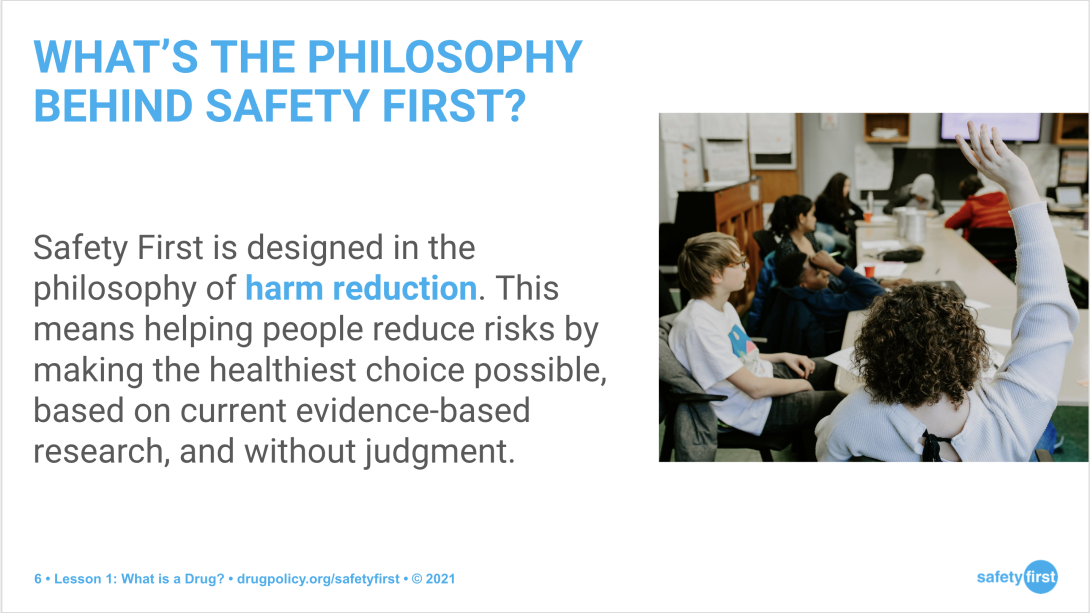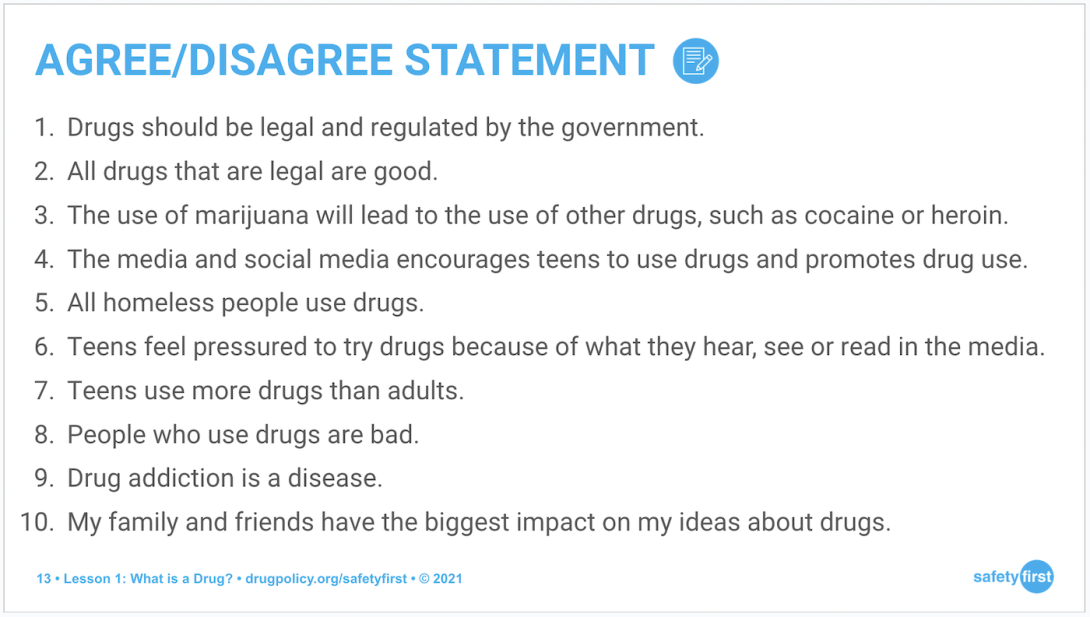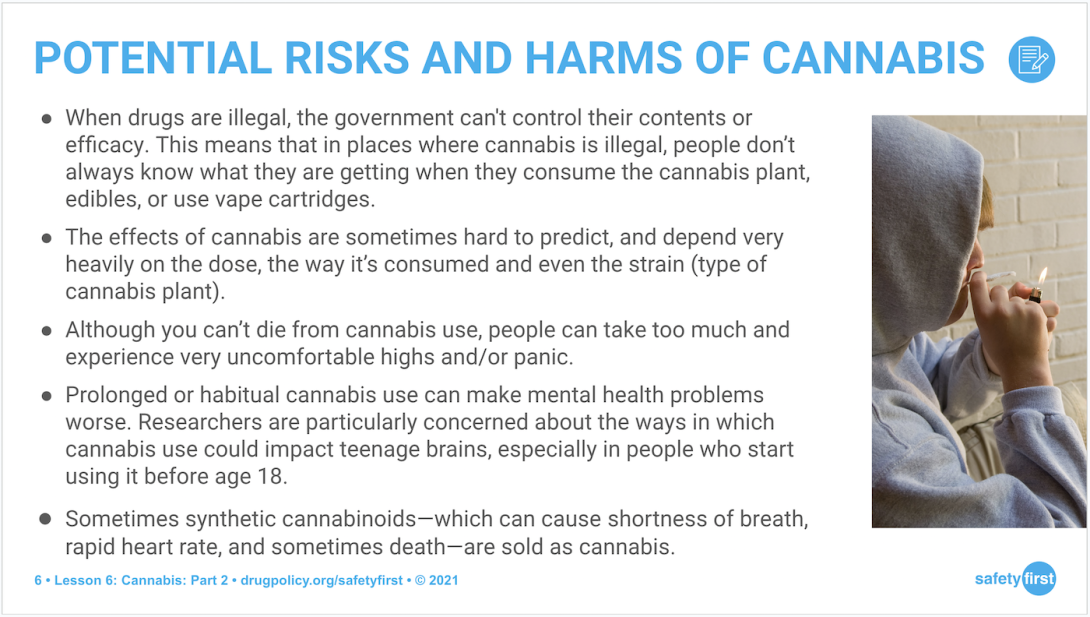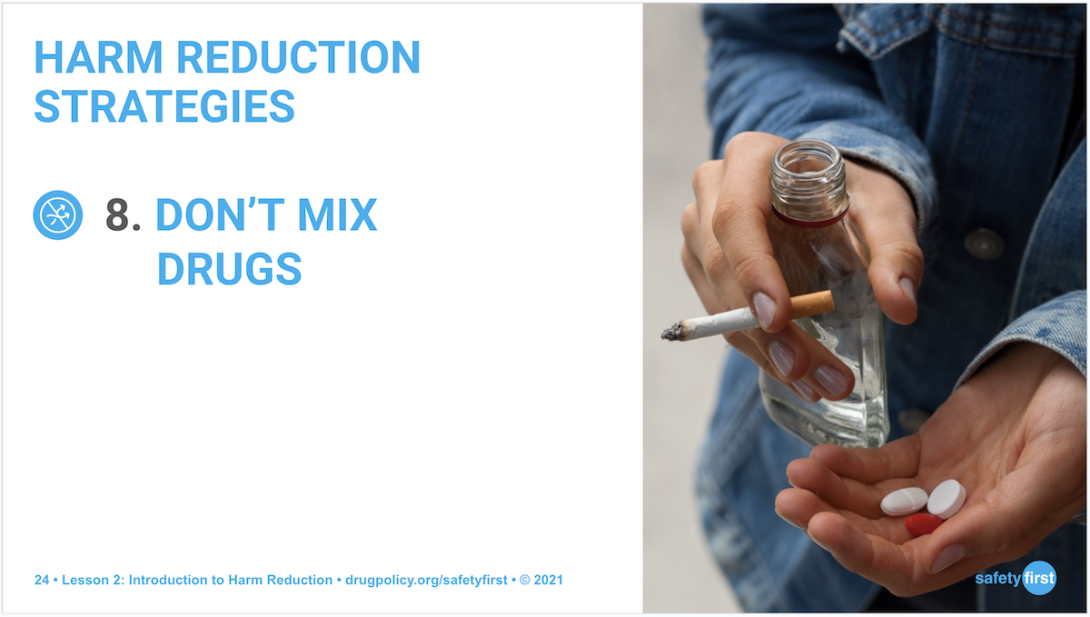
Last October, Tyler Bechtel was talking to his son about an alcohol assessment shared in health class at Kellogg Middle School when he started to wonder about the content.
He was alarmed to see how his son answered one of the questions about being a designated driver who was “buzzed” on alcohol. His son indicated that drinking some coffee would help the situation. The answer was incorrect according to the lesson, but Bechtel was concerned that his son had interpreted the instruction that way.
“My son missed the most important part, which was giving the piece of advice that you should never get in a car with someone who has been drinking,” he said.
Also raising his eyebrows? The copyright on the materials, which stood out to him as someone who works in law enforcement. In Oregon, the New York-based Drug Policy Alliance is known for its successful efforts to change state drug laws. It funded the successful campaigns for Measure 91 to legalize cannabis and Measure 110 to decriminalize possession of small amounts of hard drugs.
What’s less well known is that the nonprofit is also behind a curriculum being taught to middle and high school students at Portland Public Schools as part of their health education.
Drug Policy Alliance developed the curriculum, known as “Safety First: Real Drug Education for Teens,” to reduce the harms of using drugs, rather than to promote abstinence using scare tactics as drug education used to do. It’s promoted as the first harm reduction-based curriculum for high schoolers in the U.S.
The curriculum teaches the effects of drugs on the body, as well as methods for safer drug use, such as “start low and go slow” when trying a new drug for the first time and not mixing substances.
The use of Drug Policy Alliance’s lesson plan raises the question of whether it’s appropriate to teach materials created through the lens of a politically-motivated advocacy organization. Among the Drug Policy Alliance’s short list of priorities are “disempowering police in drug enforcement” and “legal regulation of all drugs.” Not on the list? Preventing or lowering rates of drug use.
While the curriculum’s lessons point out that abstinence is always the safest choice, some critics of the curriculum say its contents are too heavily skewed toward harm reduction at a time when fentanyl has made experimenting with drugs a lot more dangerous. In Oregon, the cheap synthetic opioid has caused a surge in fatal overdoses among teenagers in recent years.

Proponents of the curriculum say a harm reduction approach is a much-needed reversal from the failed “just say no” era of prevention and substance use education that was widely taught through the D.A.R.E. program in the 1980s, ‘90s and 2000s.
But prevention experts say the drug legalization group’s curriculum has not been proven to be effective.
The curriculum’s use also highlights a tension in the prevention world: teaching an entire student body harm reduction — an approach that typically targets people who are already using drugs — in addition to primary prevention, which seeks to delay or prevent drug use.
Furthermore, it is unknown how outcomes from even well-studied prevention and substance use curriculums will play out in the first U.S. state to decriminalize drug use.

In the absence of a robust prevention and substance use education strategy at the state level, districts are largely able to pick and choose the coursework they want to teach as long as it meets state criteria. Districts’ discretion to choose curriculums, whether evidence-based or not, has also been the subject of recent criticisms around the way some Oregon children are taught to read.
The Oregon Department of Education has not reviewed or added the Drug Policy Alliance’s Safety First program to its list of adopted materials, agency spokesperson Marc Siegel told The Lund Report. But the curriculum does align with the National Health Standards and Oregon Health Education Standards for grades 9 through 12, he said.
Siegel said his agency does not know which districts around the state are teaching Safety First.
Portland Public Schools began teaching the curriculum in 8th grade and high school health classes beginning with the 2020-2021 school year, Jenny Withycombe, the assistant director for health and adapted/physical education at the district told The Lund Report in an email. It was Withycombe, in collaboration with high school health educators, who made the decision to adopt the program, she said.
The stated goal of the study was “to measure harm reduction knowledge and behaviors, including drug policy advocacy, before and after Safety First.”
Withycombe said the district doesn’t require that programs selected for the classroom be evidence based, but said Safety First is “theory based and in the process of evidence testing.” She pointed to a study funded by the Drug Policy Alliance that was released last year. The stated goal of the study appeared to go beyond just drug education effectiveness, measuring students’ drug policy advocacy behavior as well. Specifically, it stated, the goal was “to measure harm reduction knowledge and behaviors, including drug policy advocacy, before and after Safety First.”

The study of the pilot found that following the lessons, students “pointed to ‘creating systems of support,’ ‘reducing stigma,’ and ‘lessening punishments.’” Before Safety First, it said, “the themes were advocacy for suspension (from school) and jail time.”
The study also found increased harm reduction knowledge and decreased willingness to use substances in students following exposure to the curriculum, though it said further research is needed.
Teachers in the pilot project received three 8-hour sessions of training before teaching the lessons. Portland teachers receive no training.
“We are not able to offer our teachers training on the curriculum or training specific to prevention and harm reduction in drug and alcohol prevention,” Withycombe said. “There are a lot of structural barriers to providing professional development to our teachers.”
The study looked at student responses before and after the lessons, but such a design is inadequate, said Anthony Biglan. He’s a senior scientist at the Oregon Research Institute and has studied prevention for 30 years. He said with no randomized controlled trials of the program, “it would not be considered to have sufficient evidence to call it ‘evidence-based.’”
The main problem however, he said, is that “they are not using evidence-based preventive interventions that could reliably prevent substance use.”
He said substance use among adolescents develops in the context of social relations, and that there are proven methods to address this, such as cooperative learning, an approach that provides at‐risk youth the opportunity to build social skills and cultivate friendships with low‐risk youth.
Withycombe said she selected Safety First after concluding it best aligns with criteria from the state, district and national health education standards, employs best practices from federal health agencies, and responds to local data. That data, from a random survey of select students, shows that in 2021, 27% of Portland Public Schools high school students reported drinking alcohol in the past 30 days, and 20% reported marijuana use in the past 30 days.
“Our drug and alcohol prevention curriculum is focused on abstinence in grades K-8,” Withycombe said. “Knowing that the best prevention occurs before the behavior begins and/or spikes — we start weaving in harm reduction in 8th grade.”
In response to criticism about the association with the Drug Policy Alliance, she told The Lund Report, “there is no curriculum that is value free.”
It was similar to a response Bechtel received when he emailed his son’s school about the curriculum this past October.
In an email to his son’s health teacher that he shared with The Lund Report, he noted his concerns that the program didn’t place enough emphasis on avoidance and said, “I can’t help but consider the politics involved in the curriculum.”
His son’s teacher responded that she was unaware of the association with the Drug Policy Alliance. Her email included a note from an unnamed “program director” that said, “We recognize that all instructional materials are created through a specific lens. … We also recognize that not all of our curricula will align with every family’s values which is why we encourage parent-student communication and connection in all of our units.”

Bechtel told The Lund Report he looked at the course materials online, and he thought the curriculum had “many great things in it.” But, he said, he was concerned that it was all based in theory.
“When we look at an increased amount of drug related overdoses among teens in Oregon, I’d rather that Portland Public Schools not use a theoretical or an experimental curriculum that’s provided by a political organization.”
“When we look at an increased amount of drug related overdoses among teens in Oregon, I’d rather that Portland Public Schools not use a theoretical or an experimental curriculum that’s provided by a political organization,” he said.
He said he thinks most parents would expect Portland Public Schools to pick a curriculum based in science that’s been widely studied and reviewed.
“Where do you draw the line?” Bechtel said. “Would we ask the NRA to help us address gun violence in schools…Do we have the Hershey family teaching nutrition?”
In a joint announcement on Wednesday, the Drug Policy Alliance and Stanford Medicine announced that the Safety First curriculum was being moved over to Stanford’s REACH Lab. A grant from a national harm reduction foundation is supporting the lab in updating the lessons and expanding their dissemination, Dr. Bonnie Halpern-Felsher, who runs the lab, told The Lund Report. She is also the new director of Safety First and has a background in creating prevention toolkits.
“I cannot comment directly on the parents’ concerns at this point,” Halpern-Felsher said, “but we will be conducting some focus groups with educators, parents and students to review all lessons and make necessary edits. Also, of course, there will always be teacher variation in how the curriculum is presented to students. We plan on developing and implementing a teacher training program to help support educators and increase fidelity.”
The curriculum is also used in San Francisco and New York City high schools.
Bechtel said the authors of Safety First were likely unaware of the prevalence of fentanyl in counterfeit pills when they wrote the program, which only touches on the drug in its opioids lesson and does not include warnings about the fentanyl in lessons about other drugs that now often contain it.

“That’s dangerous when you’re telling kids, ‘Hey, don’t mix Xanax and alcohol,’ when really the answer is, ‘Hey, that Xanax — if you didn’t see it come from a pharmacy, you’ve got almost a 50% chance that it’s fentanyl, and if it is fentanyl, you’ve got almost a 50% chance that it’s a lethal amount of fentanyl,” he said. “What kind of harm reduction can you teach there? Other than stay away from it responsibly?”
Portland Public Schools also offers its health teachers the Beaverton School District’s materials on fentanyl awareness, Fake and Fatal. In Beaverton, the lessons were deployed in every middle school and high school, however in Portland, the district does not track which schools are opting to use it.
“We provide the lessons and lesson plans to the teachers — beyond that each teacher delivers the lessons in their own way,” the district’s assistant health director, Withycombe, said. “Our teachers are aware of the many student deaths across the country due to fentanyl poisoning. If any lessons were going to be omitted, it is highly unlikely to be the lessons on fentanyl.”